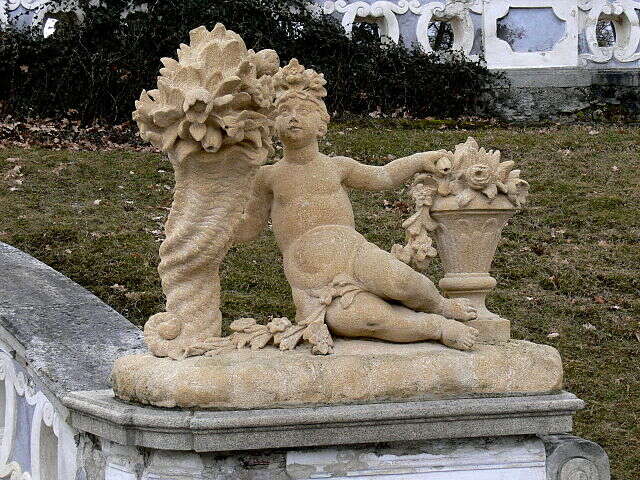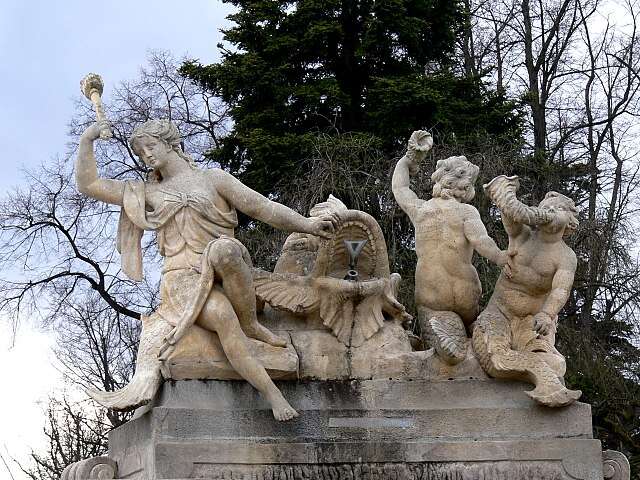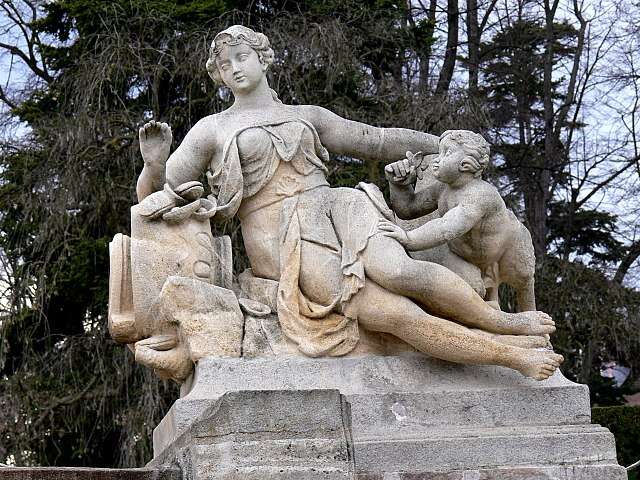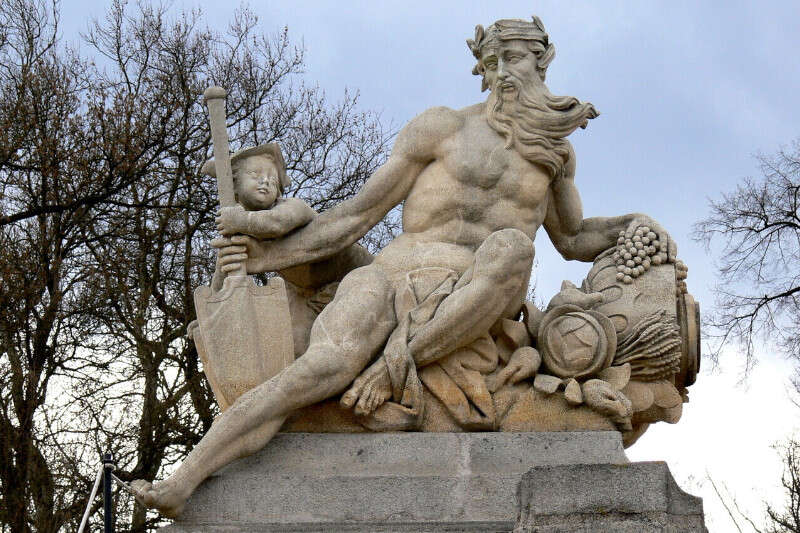The Cascading fountain
The front of the top garden is crowned by a cascading fountain with statues of water deities, a railing, vases, and allegories of the four seasons. You'll find the fountain on the slope that forms the boundary between the upper garden and the lower part. The chateau garden is almost 11 hectares in size, which is equivalent to 11 football fields.
Read a book by the fountain
The fountain invites you to sit and read a good book or simply observe it up close. The fountain is built on 4 levels and features rich sculptural details. The water for the fountain was fed through a wooden pipe from the upper castle pond (Chateau Waterworks). František Maxmilián Kaňka designed and built the fountain between 1793 and 1794. The water eventually flows into a big basin positioned above ground level.
See the statue of Neptune, the ruler of the seas
The most important element of the fountain are the statues representing gods and goddesses. Such as Neptune, Amphitrite, Oceanus, Nereus, and Triton. They're all associated with water elements such as clouds or rainbows. At the head of the lower broderie parterre, a flowing fountain was supplemented by another water element - a pair of enormous octagonal pools with fountains.
Rococo all the way
At that time, Rococo style was very much in fashion. Andreas Altomonte, a viennese architect, was the design's influence. After 1750, work on the structure began. And where did the stone come from? Sculptor Matthias Griessler brought shell limestone from Eggenburg, Lower Austria. On both sides of the cascade, 20 different ornamental vases made of Eggenburg limestone were put to the parapet wall.
Wooden pipes that didn't last long
In 1765 the original wooden pipes were replaced. The short lifespan of the wooden pipes caused problems even later. In 1785, pipes drilled from pine logs were laid in five parallel rows. At the fountain, they were plugged into cast-iron pipes made in the ironworks in Strasice. The fountain was reconstructed in 1898 and again in 2004-2005 by Václav Šilhán under the leadership of architect Josef Pleskot.
Goldfish bring wealth and prosperity
There has been a long tradition of breeding goldfish in the pools of the Cascade Fountain - the first instructions to breed them date back to 1781.









